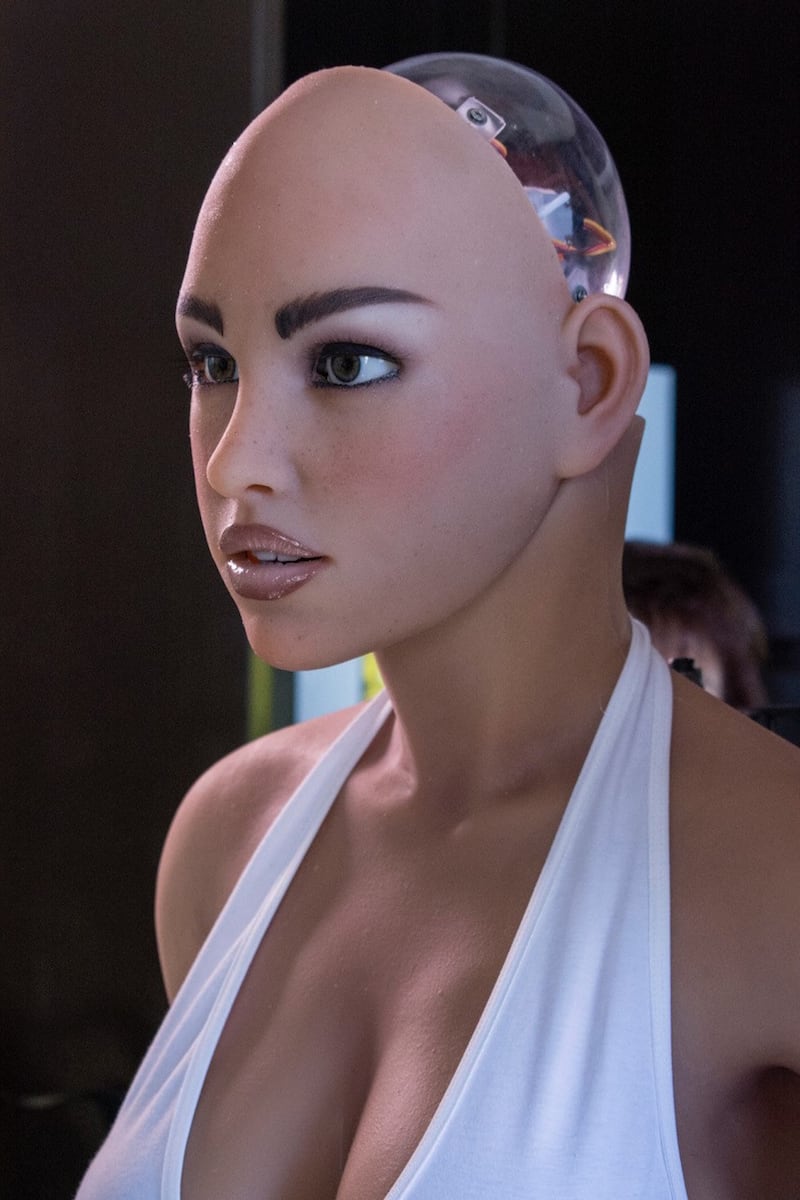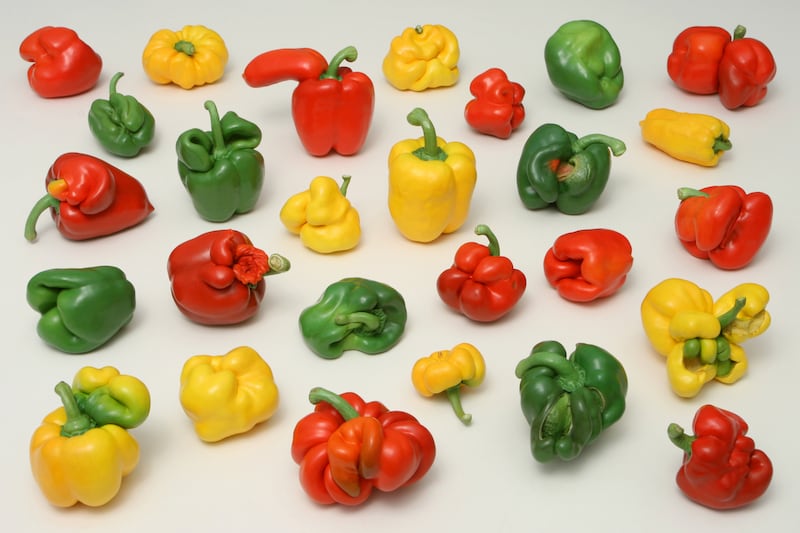Watching TV a while ago, my brother remarked how none of the adverts would make him buy anything. My brother is a problem for advertisers: he is one of those exceptionally rare people who are content, and you can’t sell to the contented. We don’t hear so much about it, as it’s not a quality that suits the drivers of capitalism. You don’t need a fancy watch, new car or swathe of selfies to announce your presence if you truly know who you are.
At the heart of all marketing is the idea of desire. Desire implies a lack of something, and stuff is poured in to fill that gap. One of the most insidious drivers of desire is the idea of perfection. If contentment is the enemy of those who profit from our market economies, perfection is their friend. You hear it over and over again: perfect skin, perfect shave, perfect driving experience, perfectly clean under the rim. Imagine if just one of these products succeeded in its category, there would be only one. With perfection, marketers are on to a good thing, because not only is it elusive, it is ultimately unattainable. Perfection is the idea of an ideal state that drives us on in our endeavours.
Perfection also makes many people miserable, and is the subject of a new exhibition at the Science Gallery. Perfection as an unattainable, but nevertheless powerfully seductive, goal predates our modern economic systems of exchange. Philosophers, religious thinkers, scientists and artists have long pondered what it is, what it might look like, and where, if anywhere, you might find it.

In numbers it has been 6, 7 and 10, for various reasons. Euclid listed the first four perfect numbers as 6, 28, 496 and 8,128. Later, someone added 33,550,336 as the fifth (it’s all about how they add and divide). In matters of faith, perfection is usually to be found, tellingly, in an unverifiable afterlife, the make up of which changes with culture and time.
Perfection in aesthetics is also a moveable feast. In ideals of female beauty, everything is relative, and perception is everything. From the Elizabethans to the Georgians, women used pastes based on lead to whiten their complexions, and then patches made of silk, velvet or mouse skin, to cover up the holes that said lead paste (and smallpox) bored into their skin. Travel in Asian countries today and see huge billboards advertising skin whiteners, even as Irish women flock to fake tan.
The desire for white or tanned skin is not innate; but the desire to emulate more attractive or more powerful role models is. It comes from a deeper, and more ancient biological drive to appear healthy and attract a healthy and powerful mate. So how does that drive get perverted into the miseries of self disgust, extreme dieting, surgeries and the feeling that you can’t leave home without a mask of makeup to obscure your original features?
Beauty
It’s easy to flip a quest for perfection into an idea of woman-hating on the part of those purveying solutions to body hair, fat bits and the “wrong” coloured skin, and it’s true that there is an anti-feminist (or even anti-female) element to it. Another origin of the problem goes back to that idea of desire implying lack, and perfection being unattainable. Perfection, when it comes to beauty, equals that which you do not have, spurred on by that which you are afraid of – more on which, later.
Throw in airbrushed, gym-toned, surgeried, professionally made up “celebrities”, to whom their looks are their lives (can you imagine anything more boring?) as the role models validated by certain strands of the media, and that quest for perfection becomes perverted into a distorted ideal. Again, this isn’t new. Anyone thinking women have only recently gone to extremes for perfection just needs to remember the corset. Or look at the fairy tale of Snow White: there she is in her glass coffin, perfect by dint of never changing, never ageing.
Plastic surgery for purely aesthetic reasons has become mainstream, which makes French artist ORLAN's work in the 1990s highly prescient. Born as Mireille Suzanne Francette Porte, ORLAN underwent a series of surgeries. Filmed and shown as part of her art project, The Reincarnation of Saint-ORLAN, they transformed the artist's face to include elements of famous women from art history and mythology, including the chin of Botticelli's Venus, the lips of Francois Boucher's Europa and the forehead of Leonardo's Mona Lisa (among other things). The perfect woman? Omniprésence, her seventh "medical performance", forms part of the Science Gallery show.

Ideals of beauty are not all driven by marketers. We find beauty attractive, that's why it's called beauty and not something else. But the quest for perfection through an imposed idea of conformity is something different. Here's a guilty pleasure: I used to watch The Swan. The US TV show, hosted by Ireland's Amanda Byram, first aired back in 2004. Each week, two women who had been judged ugly were given makeovers, including surgery. The season finale was a pageant, where the weekly winners paraded in swimsuits, all looking uncannily alike.
Eventually, I got rid of my telly. As Groove Armada sang, "if everybody looked the same/we'd get tired of looking at each other". I feel something similar, alongside deep political disquiet, when I see female Fox News presenters: all those even teeth and that long blonde hair. In the Science Gallery show, Maurizio Toscano's Ark of Imperfection archives the DNA of imperfection, just in case we need it in the future (see panel).
It’s easy to snigger at American excesses, even as some elements of our own society appear to be running to catch up, but the drive to remove perceived imperfections belies a deeper fear of the real, which is where things like periods, nosebleeds, physical deformities, mucus and slime hang out. This fear comes from the disgust reaction, that kept us safe back when we lived in caves. Blood brings infection, or is a symptom of injury and weakness, and the injured are a risk to the clan. We’ve spent millennia trying not to be eaten by wolves, and it’s no wonder some of the symptoms continue.
Today, this fear of imperfection – it has a name: Atelophobia – also triggers the trend to smooth and perfectly formed foodstuffs. Intellectually we know a misshapen carrot or bell pepper won't harm us, but there's a deeper, atavistic response: that it might signify a disease to the plant, which could be transmitted to us. It's the "uurgh" reaction that we don't always recognise for what it is, and which also makes us shun, rather than welcome, the abstract messiness of life. But in truth, we don't have anything else. When Thomas More wrote Utopia, back in the 1500s, the name of the imaginary island in which everything is "perfect" (the book is a satire), literally means "nowhere".
Humans or vegetables
While desire for perfection in terms of a perceived idea of attractiveness, whether in humans or vegetables, may cause misery, the desire and the striving are an inescapable part of what it means to be human. When Aristotle was having a stab at defining perfection, he came up with three points, which more or less mean the same thing: something that is complete, something that can’t be bettered, and something which has achieved its purpose. The thing is, every time we humans get there, “there” changes. It’s one of those points, like the end of the rainbow, edging away the closer you come. This is also how come we left the caves and invented the wheel in the first place.
On the subject of caves, a couple of thousand years ago, when Plato was musing on the topic, he used the analogy of the cave. To him, we live, chained in darkness, seeing the shadows of perfect forms as reflections from a realm we can never reach. Plato may have been inaccurate with his world of perfect forms but it’s describing something we feel: that perfection is there, somewhere. A reason for this is that while our minds are capable of imagining perfection, our bodies hold us back with their gritty realities, and susceptibility to time. Time is the enemy of perfection, things age, weather and wither – which brings us back to Snow White again. No wonder world religions consign perfection safely to the afterlife. And no wonder many seek ecstasy (literally “standing outside yourself”, the mind escaping the body) through religion, meditation or drugs.
Michelangelo echoed Plato, when he wrote that "the true work of art is but a shadow of the divine perfection". Atelophobia actually prevents the creation of a great deal of art. Fearing they can't even approach the shadow of perfection, many don't ever begin, or if they begin, can't bring themselves to finish. But the art that does get made may also create the illusion of holding back time, whether it's John Keats in his Ode on a Grecian Urn, or Leonardo's ageless Mona Lisa.
At the Science Gallery, many of the exhibits function like mental coat hangers: things to hang new thoughts on. Adam Peacock’s Genetics Gym asks you to play with the idea of gene modification. What would you have? Would you be taller, thinner, have longer more luscious hair? What would I choose if I could have anything? Remembering the banalities of Swan-style “perfection”, and realising that whatever I did, I’d probably never be content, I think I’d have a tail.
Perfection, Science Gallery Dublin, June 21st to October 6th dublin.sciencegallery.com
A Perfect World: on show at The Science Gallery

iWeigh: an interactive wall based on Jameela Jamil's Instagram movement that encourages people to weigh their attributes more than their weight.
Racing Towards Perfection, by Courtney & McCormick (Ireland): tracks depictions of the 100m sprint over time, showing how our bodies have changed thanks to nutrition, healthcare, and yes – drugs.
Graham, by Patricia Piccinini (Australia): what would a human, "perfectly" enhanced to survive a car crash look like? Piccinini adds padding, and takes away the neck entirely. No more whiplash claims then.
Harmony, by Matt McMullen (USA): McMullen and his company Realbotix aren't fans of the term "sex robot", but essentially that's what Harmony is. Apparently, the robot, which has appeared in TV and films, from CSI: New York to Lars and the Real Girl, includes multiple personalities, and a face that will never age. Perfection indeed.
Ark of Imperfection, by Maurizio Toscano (Australia): if we ever get to a thousand years into the future, and people tire of identikit "perfection", Toscano's gene-bank of imperfection – coupled with notes on why we once liked it, could well be the saving of us all.


















